WT 184
Page 184
Traditional and Playful Poetry
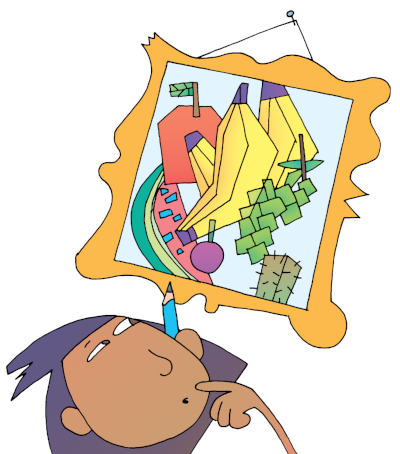
Have you ever seen a still-life painting of fruit? The red apple shines, and its sweet aroma drifts up from the canvas. Yellow bananas bunch with flavor. Cool green grapes and wonderful watermelon call to you. The painter has captured the scene so well that you can taste it.
Make Mouths Water!
You can write poetry so well that readers can taste it, too. This chapter teaches you to write traditional and playful forms. You’ll learn to write limericks and haikus, silly poems and shape poems. Your poem can offer luscious visions and sweet smells and happy sounds!
WT 185
Page 185

Cinquain 🟪 A cinquain poem is five lines long. To write a cinquain poem, follow the form listed below.
One-word title . . . . . . . . . . Pizza
Two describing words . . . Cheesy, meaty
Three action words . . . . . Bake, slice, steam
Four feeling words . . . . . . Share with my bros
One synonym for title . . . Pie
Limerick 🟪 A limerick is also five lines long. Lines 1, 2, and 5 rhyme; and lines 3 and 4 rhyme. A limerick is always about a silly topic. Notice the rhythm of the words as you read it aloud.
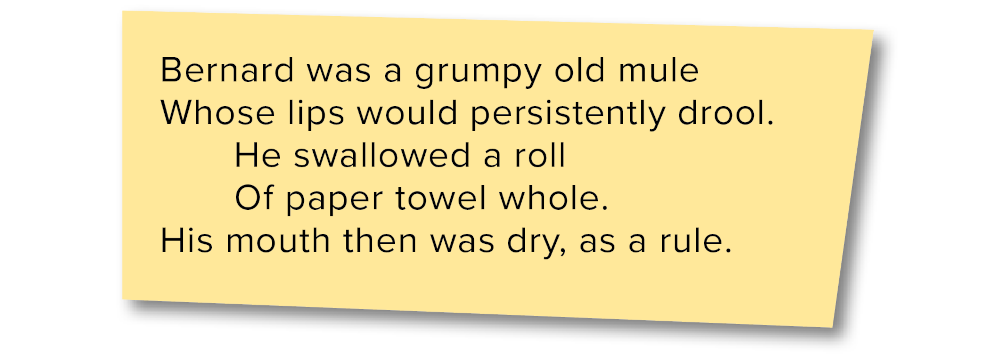 © Thoughtful Learning 2025
© Thoughtful Learning 2025
Haiku 🟪 A haiku poem is three lines long. Lines 1 and 3 have five syllables. Line 2 has seven syllables. The topic of a haiku poem is usually something in nature.
 © Thoughtful Learning 2025
© Thoughtful Learning 2025


WT 186
Page 186
Writing a Haiku Poem
Prewriting
Gather Writing Ideas 🟪 What do you see outside? A robin hunting worms, purple lilacs blooming, rain pelting puddles, trees shivering in the wind, a cat prowling along a fence . . . ?
Select a Topic 🟪 Choose an idea that is surprising or colorful, one that makes you wonder or makes your heart flutter.
Writing a Draft
Write Three Lines 🟪 In the first two lines, describe your topic. In the third line, say something thoughtful about it. Here’s a first draft by student Jill Rivers:
Lilacs burst in bloom
Around an old dry fence post,
Glad spring arrived.
WT 187
Page 187
Revising
Count the Syllables 🟪 Count the syllables in each line of your poem. (Jill's first draft did not have enough syllables in the last line.) Add, delete, or change words to fit this pattern:
Line 1: five syllables
Line 2: seven syllables
Line 3: five syllables
Check the Details 🟪 Make sure that you have used the best words to describe your topic. (In Jill’s poem, she decided that “worn-out” would be a better adjective than “dry old.”)
Editing & Proofreading
Check for Errors 🟪 Correct any spelling, capitalization, or punctuation errors. Then make a neat final copy of your poem. Here is Jill’s finished poem:
Lilacs bloom purple
Around a worn-out fence post,
Glad that spring is here.
WT 188
Page 188

Alphabet Poem 🟪 An alphabet poem uses part of the alphabet to create a funny list.
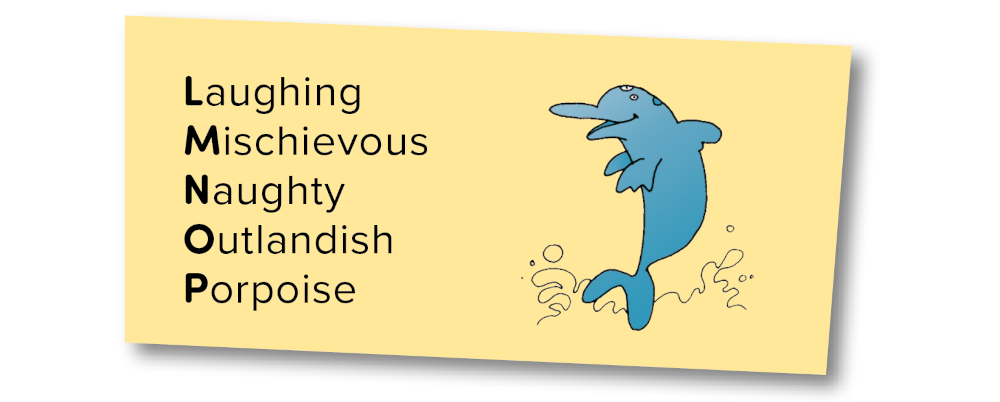
Concrete Poem 🟪 A concrete poem has a special shape or design.
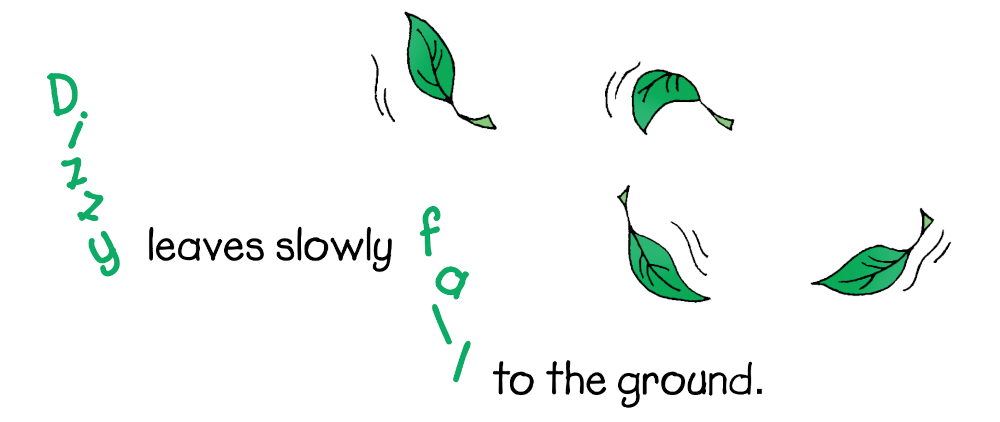
5-W’s Poem 🟪 A 5-W’s poem is five lines long. The lines answer who? what? when? where? and why?
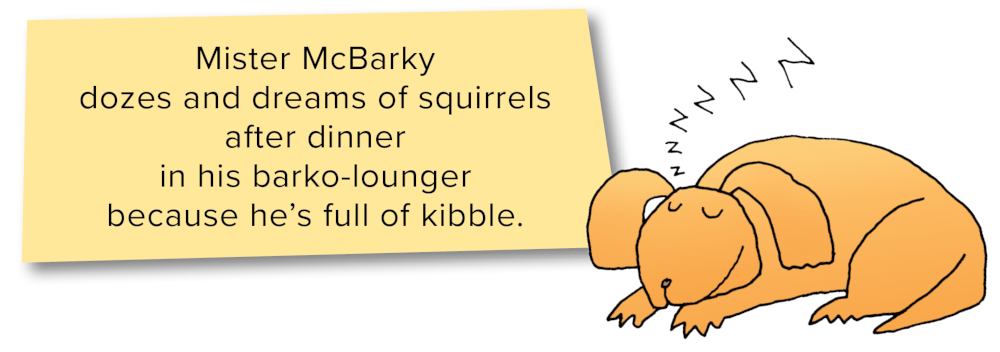 © Thoughtful Learning 2025
© Thoughtful Learning 2025

WT 189
Page 189
Writing a 5-W’s Poem
Prewriting
Choose a “Who” 🟪 Make a list of silly and serious “who” ideas. Select one for your topic.
Use a 5-W’s Chart 🟪 Fill out a chart like this to answer each of the 5 W’s.
who?
what?
when?
where?
why?
Writing a Draft
Create Your Poem 🟪 Write a line inspired by each column of your 5 W’s chart. Change words as needed.
Revising
Check Each Line 🟪 Make sure you have answered each of the 5 W’s in order.
Check Each Word 🟪 Have you chosen the best words for your poem? For example, dozes is better than sleeps, and bark-o-lounger is better than bed.
Editing & Proofreading
Check for Errors 🟪 Fix any mistakes and make a neat final copy.
|
who? |
what? |
when? |
where? |
why? |